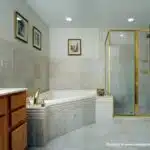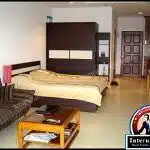Decorating a home can be an exciting and fulfilling experience, but it can also come with its fair share of challenges and financial strain. While the desire to create a beautiful living space may be strong, the reality is that many individuals struggle with determining how much they can afford to spend on decorating. Developing a decorating budget is essential for successful home decor projects, as it helps individuals make wise spending decisions and avoid overspending.
In this article, we will discuss how to make a decorating budget that aligns with your financial goals and priorities. We will explore the different factors that should be considered when creating a budget, including income, expenses, and personal style preferences. By following these steps, you will be able to create a realistic decorating budget that allows you to achieve your desired aesthetic without sacrificing your financial well-being. Whether you are looking to decorate a new home or simply refresh an existing space, this guide will provide you with the tools necessary to make informed and responsible spending decisions in your home decor projects.
Assess Your Finances
It’s no secret that decorating your home can be an expensive undertaking. Before you dive into the world of furniture, paint samples, and décor, it’s essential to assess your finances and create a budget. Doing so will help you avoid overspending, prioritize your purchases, and ultimately achieve the look you desire without sacrificing financial stability.
Assessing your budget starts with financial planning. Begin by evaluating your current income and expenses. Determine how much money is available for discretionary spending each month and how much can be allocated towards decorating your home. Consider any upcoming expenses or other financial obligations that may impact your ability to spend on decor.
Next, think about what you hope to accomplish through decorating. Do you want to revitalize an outdated space, create a more inviting atmosphere for guests, or simply refresh the look of your home? Understanding your goals is key to determining where to allocate funds within your budget. By keeping these objectives in mind, you’ll be able to make informed decisions about which items are worth investing in and which ones aren’t necessary for achieving the desired outcome.
With a clear understanding of your financial situation and decorating goals in mind, you’re ready to move onto the next step: determining how much money you should allocate towards each area of decor.
Determine Your Decorating Goals
Identifying priorities is an important step in determining your decorating goals. Before you start planning your budget, make a list of what you absolutely need versus what you want. This will help you allocate your funds properly and avoid overspending on items that are not essential to achieving your desired outcome.
Setting expectations for your decorating project is also crucial in developing a realistic budget. Decide how much time and money you can realistically invest in the project, and stick to those parameters. It’s important to remember that not everything has to be done at once; prioritize the most important aspects of the project and tackle them one by one.
To further assist with prioritizing, create a 3 item numeric list of must-haves for your decorating project. This will help keep you focused on what is most important and prevent overspending on unnecessary items. As you work through each item on the list, evaluate if it truly aligns with your overall goals for the space.
With priorities identified and expectations set, it’s time to decide on a style and theme that will guide your decorating decisions. This step will help ensure all purchases work together cohesively towards a common goal, ultimately resulting in a well-designed space that meets both functional and aesthetic needs.
Decide On A Style And Theme
After setting a budget, it’s essential to decide on a style and theme for your home décor. Choosing colors and finding inspiration are the first steps to take. The color scheme you choose will determine the overall look and feel of your space.
When selecting a color palette, consider the mood you want to create in each room. For instance, warm tones like reds, yellows, and oranges can make a room feel cozy and intimate. On the other hand, cool tones like blues, greens, and purples can create a calming effect. Finding inspiration can come from various sources such as magazines, Pinterest boards or even by taking a walk outdoors.
Once you’ve chosen your colors and gathered inspiration, it’s time to narrow down your style and theme. This step helps you determine what furniture pieces to purchase or keep in order to create the desired look. A helpful tip is to focus on a few key elements that complement each other instead of trying to incorporate too many styles at once. This approach creates an overall cohesive look that will elevate any room in your home.
As you start thinking about how you want your home décor style and theme to look like, it is important also to prioritize your decorating needs based on their importance level before proceeding with spending any money on anything specific.
Prioritize Your Decorating Needs
What are your decorating needs? Do you want to create a cozy living space, or do you need to update your kitchen? Before you can allocate your budget, it’s essential to prioritize what you want to achieve. Start by making a list of all the changes you would like to make and then rank them in order of importance. This exercise will help you determine what is necessary and what can wait until later.
Once you have prioritized your decorating needs, it’s time to allocate your budget. Remember that each item on your list will require some funding, so be sure to plan accordingly. Begin by setting aside money for the most important items on your list and then work your way down. If there isn’t enough money left in the budget, consider trimming expenses from less critical areas.
Budget allocation is only part of the equation when creating a decorating budget. It’s equally important to set a realistic timeline for completing each project. Be sure to consider any upcoming events or holidays that may impact the timeline. With careful planning and execution, creating a beautiful home on a budget is achievable!
Set A Realistic Timeline
- Estimating the time needed for a decorating project is an important step in budgeting for the project.
- It is important to take into account all the different components that may be involved in the project and make sure to factor in any potential delays or roadblocks.
- Assigning deadlines to the various tasks of the project can help to keep the project on track and on budget.
- Breaking the project down into smaller, achievable tasks can help to ensure that the timeline is realistic and manageable.
Estimate Time Needed
When setting a realistic timeline for your decorating project, it is important to estimate the time needed for each task accurately. Estimating the time needed helps you allocate your resources effectively and avoid delays that can lead to additional costs. Inaccurate estimation can result in poor time management, leading to missed deadlines and increased expenses.
To ensure estimating accuracy, start by listing all the tasks involved in the project. Break down each task into smaller sub-tasks and assign a timeframe to each one. Consider factors such as complexity, resources required, and potential roadblocks when estimating the time needed for each task. Keep in mind that unexpected issues may arise during the project; therefore, it is crucial to factor in some buffer time in your estimates.
Effective time management techniques also play a vital role in ensuring accurate estimation of the time needed for your decorating project. Prioritize tasks based on their importance and urgency, then allocate resources accordingly. Make use of tools such as calendars or project management software to track progress and stay on schedule. Regularly review your timeline throughout the project and make necessary adjustments to keep it on track.
In conclusion, setting a realistic timeline requires accurate estimation of the time needed for each task involved in your decorating project. Effective time management techniques are also crucial in ensuring that you stay on schedule and avoid delays that can lead to increased costs. By following these guidelines, you will be better equipped to manage your budget effectively while achieving your desired outcome.
Assign Deadlines
When preparing for a decorating project, setting a realistic timeline is essential to ensure that the project runs smoothly and efficiently. One way to achieve this is by assigning deadlines for each task involved in the project. By doing so, you can establish clear goals and keep track of progress.
To set realistic and achievable deadlines, it is crucial to have a detailed understanding of the work involved in each task. List all the tasks required and break them down into smaller sub-tasks. Assign an estimated timeframe for each one while taking into account factors such as complexity and potential roadblocks. Keep in mind that unexpected issues may arise during the project, so it is crucial to factor in some buffer time in your estimates.
Once you have established your deadlines, review and adjust them as needed throughout the project. Regularly monitoring progress will enable you to identify any delays or issues that may affect your timeline. Adjusting deadlines accordingly will help ensure that you stay on track and achieve your desired outcome within your budget constraints. By following these guidelines, you can successfully assign deadlines that are both achievable and realistic for your decorating project.
Research Decorating Costs
When researching decorating costs, it is essential to do your due diligence and take the time to compare prices. This may involve visiting several stores or websites, contacting various vendors and suppliers, and comparing quotes from different contractors. By doing this, you can get a better idea of what items typically cost and what professionals charge for their services.
Finding bargains is another way to save money when decorating on a budget. This could mean looking for sales or discounts on furniture, decor, or other items needed for your project. It may also involve exploring secondhand stores or online marketplaces where you can find gently used pieces at a fraction of the cost of buying new.
In addition to comparing prices and finding bargains, it’s important to keep track of all expenses related to your decorating project. This can help you stay within your budget and avoid overspending. By creating a master list of items needed, including their costs and any associated fees (such as delivery or installation), you can better manage your finances and ensure that you have enough funds to complete the project successfully.
4 Tips For Decorating On A Budget:
- Research prices thoroughly before making any purchases
- Look for bargains in sales, secondhand stores, or online marketplaces
- Keep track of all expenses by creating a master list
- Don’t overspend – stick to your budget!
As you move forward with your decorating project, remember that there are many ways to save money without sacrificing style or quality. By following these tips and putting in a little extra effort upfront, you can create a beautiful space that reflects your personal taste while staying within your financial means. In the next section, we will discuss how to create a master list of items needed for your project so that you can start tracking expenses and managing your budget effectively.
Create A Master List Of Items Needed
To create a successful decorating budget, it is crucial to start by creating a master list of all the items needed for your project. This step requires careful consideration and planning to ensure that you do not miss any essential items or overspend on unnecessary ones. One effective approach to generating this list is through brainstorming techniques, such as mind mapping or listing out every possible item required.
It is also important to find inspiration for your decorating project when creating your master list. Inspiration can come from various sources, including magazines, social media platforms like Pinterest and Instagram, and even from visiting local home decor stores. By taking the time to explore different design styles and concepts, you can gain a better understanding of what items are necessary for your project and how much they might cost.
In summary, creating a master list of all the items needed for your decorating project is an essential step in developing a comprehensive budget plan. Brainstorming techniques and finding inspiration are key components of this process that can help you identify all the necessary items while staying within your budget constraints. In the subsequent section about breakdown costs by room, we will delve deeper into how to allocate funds effectively based on each room’s needs.
Breakdown Costs By Room
According to a recent survey, the average person spends around $1,500 on home decor each year. While this may seem like a lot, there are ways to decorate your home without breaking the bank. One effective method is to break down costs by room. This will allow you to allocate your budget accordingly and ensure that you have enough funds for each area of your home.
When breaking down costs by room, start by prioritizing which rooms need the most attention. For example, if you spend most of your time in the living room, it may be worth investing more money into this space. On the other hand, if you rarely use your guest bedroom, it may not be necessary to spend a large portion of your budget on decorating this area.
Cost saving tips and DIY decorating ideas can also help you stay within your budget. Instead of purchasing expensive artwork, consider creating your own pieces using affordable materials such as canvas and paint. Additionally, shopping at thrift stores or garage sales can be a great way to find unique decor items at a fraction of the cost.
Consider DIY projects when allocating your budget for each room. Many simple projects such as painting walls or refinishing furniture can make a huge impact on the overall look and feel of a space without costing a fortune. With some creativity and resourcefulness, it’s possible to decorate your home in style while staying within your means.
Consider Diy Projects
One of the most effective ways to save money on home decor is to consider DIY projects. Not only are these projects typically less expensive than purchasing pre-made items, but they also offer a unique opportunity for personalization and creativity. Fortunately, there are countless DIY project ideas available online and in books that cater to a wide range of skill levels and design preferences.
Some popular DIY project ideas include creating your own artwork, making custom throw pillows or curtains, repurposing old furniture with a fresh coat of paint or new upholstery, and building shelving units or other storage solutions. These projects can often be completed using materials that you may already have on hand or can easily obtain at a low cost from hardware stores or online retailers. By investing time and effort into these projects, you can achieve a high-end look for a fraction of the cost.
One important factor to keep in mind when considering DIY projects is the potential for cost savings. While some projects may require purchasing specialized tools or materials, many can be completed using basic supplies that you likely already have at home. Additionally, by taking on these projects yourself instead of outsourcing them to professionals, you can save significantly on labor costs. With careful planning and execution, DIY projects can be an excellent way to stretch your decorating budget further while achieving a customized look that truly reflects your personal style.
As we’ve discussed, DIY projects are an excellent way to save money on home decor while adding personalized touches to your space. In the next section, we’ll explore another key strategy for maximizing your decorating budget: shopping smart for decor items. By combining savvy shopping with strategic DIY efforts, you can create a beautiful home without breaking the bank.
Shop Smart For Decor Items
When it comes to decorating on a budget, one of the most important steps is to shop smart for decor items. This means making strategic choices about whether to opt for DIY or store-bought products and deciding between secondhand or new items. By following these tips, you can create a beautiful home without breaking the bank.
Firstly, consider whether you have the skills and time required for DIY projects. If you enjoy crafting and have some experience with tools and materials, creating your own decor items can be an affordable option. However, if you’re pressed for time or lack confidence in your abilities, it may be more cost-effective to purchase ready-made goods from stores. Remember that even if a DIY project seems cheaper at first glance, it may end up costing more in terms of time and effort than buying a similar item in-store.
Secondly, don’t overlook secondhand items when shopping for decor pieces. Thrift stores, garage sales, and online marketplaces can all be great sources of unique pieces at low prices. Not only does buying secondhand save money on the initial purchase price, but it’s also environmentally friendly as it reduces waste by giving old items new life. However, be sure to inspect secondhand items carefully before purchasing them to ensure they’re in good condition.
Finally, keep an eye out for deals and discounts when shopping for new decor items. Many stores offer promotions throughout the year – such as Black Friday sales or clearance events – that can help you save money on high-quality goods. Additionally, signing up for store newsletters or loyalty programs can give you access to exclusive discounts and early sale alerts. By taking advantage of these opportunities and being patient when making purchases, you’ll be able to find great deals on decor items that fit within your budget.
Look For Deals And Discounts
Tips for Bargain Hunting, Using Coupons and Promo Codes
One of the best ways to stick to a decorating budget is by looking for deals and discounts. This can help you get the most bang for your buck without breaking the bank. When it comes to bargain hunting, there are a few tips you can use to make sure you’re getting the best deal.
First, start by doing your research. Look online for sales and promotions. Many retailers offer discounts on their websites that may not be available in-store. Additionally, check out social media pages for stores and brands you like as they often post exclusive coupons and promo codes.
Secondly, don’t be afraid to negotiate. If you see an item you love but it’s out of your price range, try talking to a sales associate or manager about any potential discounts or sales coming up in the future. You never know what kind of deal they may be able to offer!
Lastly, consider signing up for loyalty programs or newsletters from your favorite stores. These programs often offer exclusive discounts and coupons that can help save you money on future purchases.
| Store | Discount | Promo Code |
|---|---|---|
| Home Depot | 10% off $100+ | HOMEDEPOT10 |
| Bed Bath & Beyond | 20% off one item | SAVEMORE |
| Target | $5 off $50+ | SAVE5 |
Incorporating these tips into your shopping routine can help ensure that you stay within your decorating budget while still getting everything you need to create the space of your dreams.
Factor in Hidden Costs
As important as it is to look for deals and discounts when decorating on a budget, it’s equally important to factor in hidden costs before making any purchases. Hidden costs refer to any additional expenses that may come up during the decorating process that weren’t originally accounted for in your budget.
Some common hidden costs when designing a space include shipping fees, taxes, and installation costs. For example, if you’re purchasing a large piece of furniture online, shipping fees can easily add up and take a chunk out of your budget. Additionally, if you plan to hire a professional to install any items in your home, be sure to factor in their labor costs as well.
By taking the time to consider these hidden costs before making any purchases, you can avoid any unexpected expenses that may pop up along the way. This will help ensure that you stay on track with your decorating budget and don’t overspend on unnecessary expenses.
Factor In Hidden Costs
Looking for deals and discounts is a great way to start off your decorating budget, but it’s important to factor in hidden costs as well. Unexpected expenses can quickly add up and leave you with an unmanageable bill. It’s essential to have a plan in place for handling these costs before they arise.
One of the best ways to prepare for unexpected expenses is by setting aside a contingency fund. This fund should be separate from your decorating budget and should only be used in case of emergencies. Saving tips such as cutting back on unnecessary expenses or finding ways to earn extra income can help you build up this fund over time.
Another way to avoid unexpected expenses is by being proactive about maintenance and repairs. Regularly inspecting your home for potential issues and addressing them promptly can prevent costly repairs down the line. By taking care of small problems now, you’ll save yourself money and stress in the long run.
In order to successfully track spending and adjust as needed, it’s important to keep detailed records of all expenses related to your decorating project. This includes receipts, invoices, and any other documentation that shows how much was spent on each item or service. By analyzing this information regularly, you can identify areas where you may be overspending or where unexpected expenses are cropping up more frequently than anticipated. This will allow you to make adjustments as needed in order to stay within your budget and avoid any financial surprises along the way.
Track Spending And Adjust As Needed
- Accurately tracking expenses is a key component of creating a sustainable budget for decorating.
- To effectively track expenses, it is important to document the amount spent on each item and the total amount spent.
- After expenses have been tracked, the budget can be adjusted accordingly to ensure that spending remains within the allotted amount.
- Making adjustments to the decorating budget can help to create a successful financial plan and avoid overspending.
Track Expenses
To properly manage your decorating budget, it is important to track expenses. This step enables you to identify where your money goes and where you can cut back on unnecessary spending. Tracking your expenses allows you to see which items consume most of your budget and which areas need adjustment.
To effectively track expenses, utilize available budgeting tools. There are several software programs and applications that can help you record and categorize expenses in real time. You can also use spreadsheets or paper logs to manually track your spending. Whatever method you choose, make sure it is easy for you to use and fits your lifestyle.
Moreover, tracking expenses should be done consistently throughout the entire decorating process. This means keeping receipts, bills, and invoices organized in one place and regularly updating your budget records. By doing so, you will gain a clearer picture of how much money has been spent and what adjustments need to be made moving forward. Remember that every penny counts in maintaining a successful decorating budget.
Adjust Budget
After tracking your expenses, the next step in effectively managing your decorating budget is adjusting it as needed. This means making changes to your spending plan based on your actual spending behavior. It is important to adjust your budget regularly to ensure that you are sticking to it and not overspending.
To adjust your budget, start by reviewing your tracking records and identifying areas where you have spent more than planned. Determine if the overage was due to an unexpected expense or if it was a result of overspending in a particular category. From there, make necessary adjustments by reducing spending in other areas or cutting back on unnecessary expenses.
It is also important to remember that adjusting your budget does not mean sacrificing quality or style. There are many ways to achieve a beautiful and comfortable home without breaking the bank. By keeping track of expenses and adjusting your budget as needed, you can create a space that fits both your aesthetic preferences and financial goals.
Reuse And Repurpose Existing Items
As the old saying goes, “one man’s trash is another man’s treasure.” This couldn’t be truer when it comes to decorating on a budget. Upcycling ideas and creative repurposing can save you a lot of money while still giving your home a fresh new look.
Instead of buying brand new furniture or decor, take a look at what you already have. That old wooden chair in the garage? With some paint and new upholstery, it could become a stylish addition to your living room. Those mason jars gathering dust in the pantry? They can be transformed into chic candle holders or storage containers with just a little creativity.
Don’t be afraid to think outside the box when it comes to upcycling and repurposing. You never know what hidden gems you might find in your own home. Plus, not only will you save money by avoiding expensive purchases, but you’ll also feel proud of yourself for being resourceful and environmentally conscious. So get creative, have fun, and celebrate your accomplishments as you stay motivated to create a beautiful home on a budget.
Celebrate Your Accomplishments And Stay Motivated
As you continue to work towards achieving your goals, it is important to take time to celebrate your accomplishments. Celebrating milestones can provide motivation and help you stay on track with your decorating budget. It is important to acknowledge that staying motivated can be challenging at times, but celebrating small successes along the way can help keep you focused on the big picture.
One way to celebrate accomplishments is by setting mini goals throughout the process of decorating your space. These mini goals could include selecting a color palette or finding a statement piece for the room. Once you have achieved these mini goals, take time to appreciate what you have accomplished. You could treat yourself to a small indulgence such as a new candle or enjoy a night out with friends.
Staying motivated during the decorating process can be difficult, especially if unforeseen expenses arise. However, it is important to remember why you started this journey in the first place and how achieving your goal will impact your life positively in the long run. By celebrating each accomplishment along the way, you will stay motivated and focused on completing your decorating project within your budgetary constraints.
Conclusion
Creating a decorating budget can be an intimidating task, but it is essential to ensure that you do not overspend and end up with financial stress. As a financial advisor, I recommend assessing your finances and determining your decorating goals before deciding on a style and theme. Prioritizing your decorating needs, setting a realistic timeline, factoring in hidden costs, tracking spending, and reusing existing items are all vital steps in creating a successful decorating budget.
One anticipated objection may be that creating a budget will limit creativity. However, this is not necessarily true. In fact, having a budget can encourage creative thinking by forcing you to find new ways to achieve the desired look without overspending. Additionally, by reusing existing items and repurposing them in unique ways, you can add character and personality to your space while staying within your budget.
In conclusion, creating a decorating budget can be challenging but is necessary for financial stability. As a budgeting expert, I advise prioritizing your needs over wants and being mindful of hidden costs. Remember to track spending and adjust as needed while celebrating your accomplishments along the way. By following these steps, you can create the space of your dreams without breaking the bank.
Image Credits
- “Australian Home Journal Budget Decorating September 1979 D” by ♥threadbare (featured)

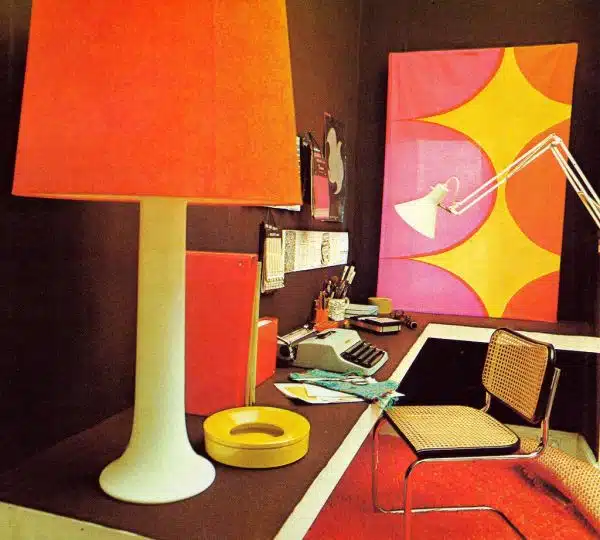





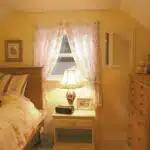
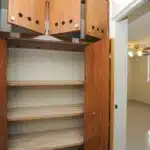




![Calculating How Much Stone Dust You Need 14 [Blog Post]Stone Dust © Oxfam Australia](https://green-life.blog/wp-content/uploads/2023/05/GdZVzgTqPhjq-150x150.jpg.webp)





